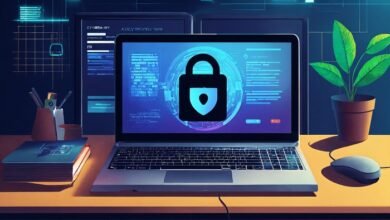Facecheck ID Login: A Revolution in Secure Authentication

The digital world has made significant strides in advancing how we interact with technology. From the rise of smart devices to the creation of complex biometric systems, security and ease of access are continuously improving. One of the latest and most exciting innovations is Facecheck ID login. This cutting-edge authentication method uses facial recognition to provide secure, frictionless access to online services, apps, and devices. With a focus on user experience and advanced security protocols, Facecheck ID login is setting the stage for a new era in digital identity verification.In this blog post, we will explore what Facecheck ID login is, how it works, its advantages and challenges, and the future of biometric authentication.
What Is Facecheck ID Login?
Facecheck ID login refers to a biometric authentication system that uses facial recognition technology to verify a user’s identity. Unlike traditional password-based methods, which often rely on complex alphanumeric codes, Facecheck ID allows individuals to access their accounts and devices by simply scanning their faces.The primary advantage of this method is its convenience. Users don’t have to remember complex passwords or carry physical security keys; their face becomes the key. This technology is commonly used for logging into smartphones, computers, online accounts, and even accessing secure facilities.
How Does Facecheck ID Login Work?
The workings of Facecheck ID login involve multiple steps to ensure accuracy and security. Here’s a breakdown of the process:
- Initial Registration: When you first set up Facecheck ID login, you register your facial features by taking a photo or video of your face using a device with a camera. The system captures various data points from your face, including the shape, size, and positioning of your eyes, nose, and mouth.
- Data Conversion: The captured data is then converted into a unique biometric template—a digital representation of your facial features. This data is stored securely, either on your device or in the cloud, depending on the service provider.
- Authentication: When you attempt to log in using Facecheck ID, the system compares your live facial scan with the stored template. If the two match, you gain access to the system. In some cases, additional security features like liveness detection are included to ensure the person attempting to log in is present and not using a photo or video.
Benefits of Facecheck ID Login
There are several key benefits to adopting Facecheck ID login:
Enhanced Security
Facecheck ID provides a higher level of security compared to traditional passwords. It is incredibly difficult for hackers to replicate someone’s face accurately enough to gain access. Even if a hacker manages to steal a password, they would still need to bypass the facial recognition system, which serves as an additional layer of defense.
Convenience
Gone are the days of forgetting or resetting passwords. With Facecheck ID login, you simply look at your device or camera, and you’re in. This user-friendly authentication method streamlines the login process, making it much faster and more convenient than typing passwords or using two-factor authentication.
Privacy Protection
Because Facecheck ID login uses a person’s unique facial features, it is inherently more secure than password-based systems that can be guessed or stolen. Additionally, this method ensures that only the person it recognizes can gain access to their accounts, reducing the risk of identity theft.
Fraud Prevention
The use of Facecheck ID login minimizes the chances of fraud. Since the system captures intricate details of a user’s face, it is challenging for fraudsters to spoof the system using images or videos. This makes it an ideal option for secure online transactions and sensitive data protection.
Integration with Various Devices
Facecheck ID can be used across a wide range of devices, from smartphones and laptops to home security systems and even physical access points. As more and more companies implement this technology, the number of services that support Facecheck ID login will continue to grow.
The Role of Artificial Intelligence in Facecheck ID Login
At the heart of Facecheck ID login is artificial intelligence (AI). AI plays a significant role in analyzing and processing the data collected during facial scans. Using machine learning algorithms, the system continually improves its accuracy by adapting to different lighting conditions, angles, and facial expressions.Furthermore, AI ensures that Facecheck ID can differentiate between real users and potential threats. For instance, liveness detection technology powered by AI ensures that the facial recognition system can detect if the person scanning their face is actually present, rather than relying on a static image or video.
The Challenges of Facecheck ID Login
While Facecheck ID login offers many advantages, there are also several challenges to consider:
Privacy Concerns
Storing biometric data, such as facial features, raises privacy concerns. If this data is not properly protected, it could be vulnerable to hacks or misuse. Some users may be apprehensive about sharing their biometric information, as it could potentially be used for surveillance or unauthorized tracking.
Technical Limitations
While facial recognition technology has improved significantly, it is still not perfect. Factors such as poor lighting, changes in appearance, or the presence of obstructions like glasses or masks can impact the system’s ability to recognize a user. Moreover, facial recognition may not be effective for people with certain physical disabilities or unique facial features.
Ethical Considerations
The widespread use of facial recognition technology, including Facecheck ID login, raises ethical questions about consent and surveillance. Concerns about how facial data is collected, used, and stored are central to ongoing debates around the ethics of biometric identification.
Dependence on Technology
Facial recognition relies heavily on technology. If your device or the facial recognition system malfunctions or experiences an error, you may be locked out of your accounts or systems. Additionally, not all devices or services support Facecheck ID login, which may create barriers for some users.
The Future of Facecheck ID Login
As Facecheck ID login continues to evolve, its potential applications will only grow. Future developments may address the current challenges and improve the accuracy and security of facial recognition systems. In the coming years, we can expect Facecheck ID to become even more integrated into everyday life, from accessing public services to enhancing online shopping experiences.
Multi-Modal Authentication
The future may see the rise of multi-modal authentication systems that combine Facecheck ID with other biometric methods, such as fingerprint scanning or voice recognition. This hybrid approach would increase security while maintaining convenience for users.
Improved Accuracy and Speed
With advancements in AI and machine learning, Facecheck ID login will become even faster and more accurate. Users can expect quicker authentication times and systems that can recognize faces under a wider range of conditions, including challenging lighting and angles.
Widespread Adoption
As privacy concerns are addressed and the technology matures, Facecheck ID is likely to become more widespread. From government services to corporate security, more organizations are expected to adopt facial recognition systems to enhance user experiences and secure sensitive information.
Enhanced Privacy Protection
The future of Facecheck ID login will likely include improvements in data protection. Decentralized storage solutions, where biometric data is stored on users’ devices rather than in centralized databases, could help alleviate privacy concerns and reduce the risk of data breaches.
Conclusion
Facecheck ID login represents a significant advancement in digital security, offering enhanced convenience and protection. While challenges such as privacy concerns and technical limitations remain, the potential benefits are vast. As technology evolves, we can expect facial recognition systems to become more accurate, secure, and widely accepted.The future of authentication is undeniably moving toward biometrics, and Facecheck ID login is leading the charge. Whether it’s for personal security, online transactions, or accessing services, this technology is poised to redefine how we interact with the digital world.
FAQs
1. What is Facecheck ID login?
Facecheck ID login is a biometric authentication system that uses facial recognition technology to verify a user’s identity. It allows users to log in to devices and online accounts by scanning their face.
2. Is Facecheck ID login secure?
Yes, Facecheck ID login is highly secure due to the unique nature of facial features. It’s much harder for someone to replicate or steal your face compared to a password or PIN.
3. What devices support Facecheck ID login?
Many modern smartphones, laptops, and tablets support Facecheck ID login. It’s also increasingly being integrated into other systems, such as home security devices and workplace access points.
4. Can Facecheck ID login work in low light?
While facial recognition technology has improved in low-light conditions, it may still have difficulty recognizing faces in extremely dim environments. However, future updates may improve this functionality.
5. Are there any privacy concerns with Facecheck ID login?
Privacy concerns can arise when biometric data is stored. It’s important to ensure that the data is securely stored and that users have control over their personal information to mitigate potential risks.





